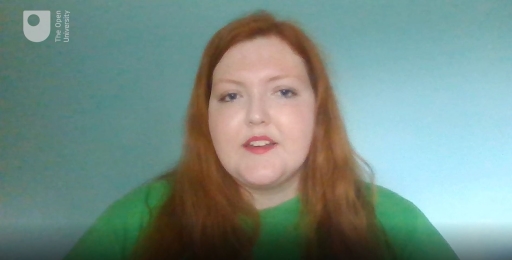2.1 Applications, interviews and assessment centres
Many different aspects of recruitment can influence the diversity and inclusivity of your organisation. You’ll look briefly at some of the key features in this section.
Applications
If your application process involves a CV, then the applicant can obviously choose what they tell you and how they share it. However, if you use an application form, you’ll need to ensure the use of inclusive language in your questions.
Think about whether the questions you are asking are all necessary. Are they all inclusive? For example, do you really need to know the gender of the applicant? If you do, asking for their preferred pronoun can be a positive, inclusive gesture.
Many graduate recruiters have traditionally focused on specific degree level requirements, e.g. a 2.1 or above, but some employers have now removed that expectation, testing skills and strengths in more inclusive ways to enable access to a wider range of candidates.
If you want to view a basic example of an application form, ACAS provides a simple template here [Tip: hold Ctrl and click a link to open it in a new tab. (Hide tip)] .
Shortlisting
CIPD (2024) offers useful advice for making this process fair:
- Anonymise applications - remove identifying information from CVs and application forms before hiring managers review them. This includes applicant name and contact details, education dates and other ‘cues’, such as which schools or universities candidates attended.
- Remove bias in automated sifting - evaluate bias by comparing the results of an automated sift against a manual screening process for one round. This can help to identify if the keywords and criteria used are subject to bias. For example, sifting based on postcode can introduce bias against certain socioeconomic or ethnic groups.
- Include more than one marginalised candidate in the shortlist – after sifting applications on an anonymous basis, staff who are not involved in the interviewing should review the candidate characteristics for the highest-ranking applications and determine how long the shortlist needs to be to ensure marginalised candidates are included.
If sifting is a manual process, a diverse panel of shortlisters would be ideal, to avoid similar people choosing individuals with the same backgrounds as them.
It is also possible to purchase software, which aims to make the recruitment process more inclusive. Here is Sophie Washington, one of the employers we interviewed, discussing a new tool that her organisation is trialling.

Transcript: Video 3: Sophie on recruitment software
Contextual recruitment
An approach primarily used at shortlisting stage and described by the Bar Council (Mercer & Krys, 2024) as a process ‘that helps recruiters to look at the context in which candidates received their grades’ highlighting applicants from disadvantaged backgrounds who have outperformed their peers and enabling employers ‘to evaluate applicants based on a better understanding of their circumstances and potential.’
The Bar Council, working with RARE Recruitment (Mercer & Krys, 2024)
First introduced in 2021 and now used by over 25 chambers, candidates are asked to complete an additional, optional set of contextual questions as part of their application.
Questions relate to three areas:
- Academic background and school attended
- Personal circumstances, for example if they have care responsibilities
- Socio-economic background, for example if they qualified for free school meals or had to work to support their studies.
This data is then processed by Rare using an algorithm to generate ‘flags’ which indicate a relative level of disadvantage or an indication of where an individual has outperformed their peers. Recruiters will be able to pull ‘flag’ data from the Gateway system – they will see the general response but not the detail of applicants’ answers. They can then decide how to use the data and adjust their recruitment processes as relevant.
It is suggested that ‘recruiters consider contextual information only for those applicants which meet the minimum qualifying criteria but fall into a ‘maybe/borderline’ group.’

